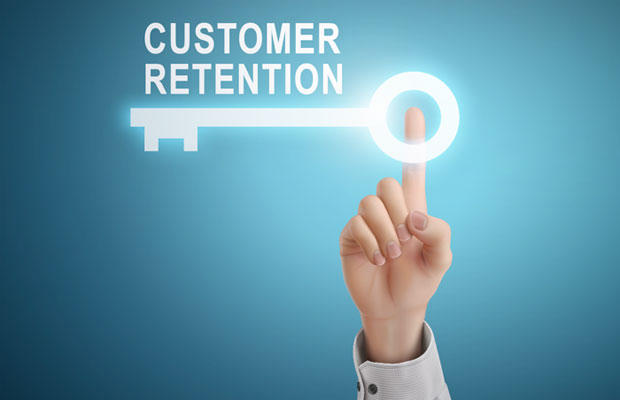Despite the numbers that show how lucrative retention is in an increasingly subscription-driven economy, the emphasis has been on new customer acquisition.
That is still true, according to Target Marketing’s most recent study. Forty-two percent of the firms it surveyed said they were increasing their budgets for customer acquisition, while only 33 percent said the budget for retention would increase.
New customers always earn sales kudos, but customers kept — even when they deepen their relationship with a vendor and spend increasing amounts of money — tend to be taken for granted. The excitement of landing a new logo is justified, but what’s more justified is a healthy and profitable balance sheet at the end of the quarter, something retention delivers.
Start With Retention
If you’re a vendor that lives and works in the cloud, retention is the key to survival. In most industries, it takes about three years for a customer to become profitable. In some industries, it’s a lot longer (in insurance, for instance, it takes seven years).
With even a 10 percent customer churn rate, the chances of enough customers reaching profitability to get your company into the black are not great. If your churn rate is 32 percent — the average for Software as a Service companies targeting SMB customers — you may never reach profitability, no matter how hard your sales team sells. With a high churn rate, the better your sales team sells, the more money you stand to lose.
For many years, I’ve argued that CRM is useful for new customer acquisition butpriceless when it comes to retention, where it really adds to the bottom line.
Where do you start your retention efforts? Many companies believe those efforts begin after the deal is done and the customer is onboarded and handed off to a customer success team.
However, in this day of changing customer journeys, more complex sets of decision-makers, and the need for sales to add value in every interaction, waiting that long is dangerous. Retention needs to be a consideration from the very start — even before a sale is completed.
That clashes with the organizational structures of most businesses. Sales sells, then the customer is handed off to someone else in the organization for the relationship portion of the relationship. Those people are officially in professional services, support and marketing; unofficially, retention also is driven by finance, R&D, legal and all the other things that make a company work.
Retention Is Everyone’s Job
A failure in any part of the company can lead to a bad experience and a lost customer. I’ve said before thatcustomer experience is everyone’s job; if that’s the case, it’s also the case for customer retention.
If that’s the case, then, retention starts with the first people to initiate contact with customers: marketing and sales. The actions taken during the process of winning a customer over for the first time must result in a happy customer who’s set up for future sales.
For marketing, those actions take place today even before a lead is identified; the content a company produces and the business’ website must be effective and enjoyable. From there, lead information must be collected in ways that work for the buyer — for example, by doing away with repetitious forms that must be filled out every time someone wants to read your content, regardless of how many times you’ve collected that information.
Then marketing must use the tools at its disposal to get the lead to sales when it’s at its hottest — not just because it will be easier to sell, but because at that stage the buyer will welcome the contact and it won’t be a nuisance.
From there, it’s sales’ chance to set the stage for retention; sales staff who are well-trained and can act as subject-matter experts add value to the buying experience and send a signal that expertise is a hallmark of the entire organization. Delivering that requires a learning solution that can keep salespeople in constant training mode and a commitment to that training so the content is always relevant.
You can’t deliver this without listing for the echoes, and not just in the form of deals done. If you want your early retention efforts to pay off, find ways to collect customer feedback throughout the sales and marketing process, then use it and correlate it against retention results.
The things you believe are fostering long relationships may not be as effective as you think; similarly, the small actions that individuals take in sales and marketing may result in a disproportionate retention rate. Share that information so everyone in sales and marketing can employ those tactics.
Remember the Rewards
Since we’re talking about salespeople here, don’t forget the incentives. Sales does what’s great for sales, so incentivize retention and feedback results that point toward longer customer relationships. Also reward sales and marketing for using CRM to record the histories of these sales efforts. Having that data in CRM allows marketing to revisit those customers and nurture them toward their first renewals or initial additional purchases.
The first step toward that is to cultivate a retention mindset. One very smart company did so at its quarterly employee meetings by showing its growth in a bar chart. The bars grew quarter by quarter as the chart went to the right. The chart also showed churn quarter by quarter projecting below growth. The CEO was able to say the company was getting great results — but also indicate visually what could have been added to results had churn been reduced.
It’s silly to expect customers to wait to form an impression of their experiences — and whether or not they should remain a customer — until after the sales process ends. If retention is a priority for your business, it’s equally silly not to emphasize retention starting from your first contact with buyers.

























































Social CRM
See all Social CRM